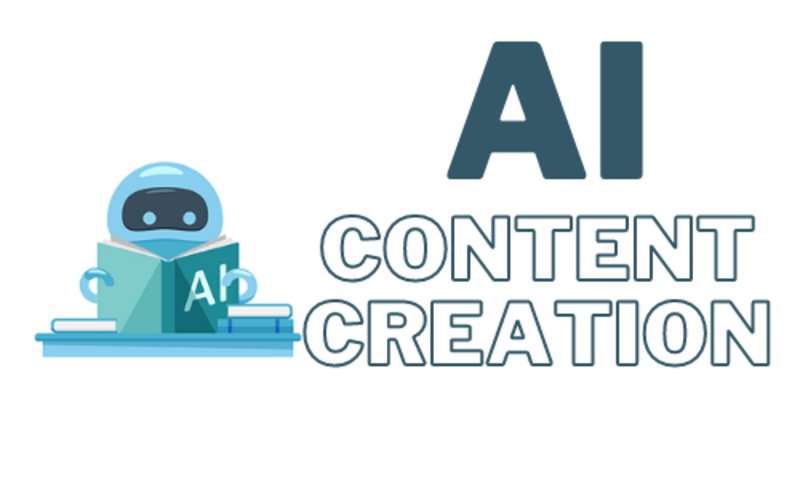Creating content is crucial for any digital marketing strategy. It helps businesses reach their audience, build brand awareness, and drive engagement. However, producing high-quality content consistently can be challenging. This is where AI writing software comes in. AI tools can assist in generating, optimizing, and refining content, making the process faster and more efficient. In this article, we will explore how AI writing software can help you create effective content and share practical tips for using these tools to their fullest potential.
Understanding AI Writing Software
What is AI Writing Software?
AI writing software uses artificial intelligence to generate and improve written content. These tools can draft articles, blog posts, social media updates, and more. They analyze vast amounts of data to understand language patterns and produce text that mimics human writing. The goal is to make content creation easier, faster, and more consistent.
How Does AI Writing Software Work?
AI writing tools leverage machine learning and natural language processing (NLP) to understand and generate text. They are trained on diverse datasets, which include books, articles, websites, and other written materials.
When you input a topic or a few keywords, the AI processes this information and generates content based on its training. The result is a coherent and relevant piece of writing that aligns with your input.
Benefits of Using AI Writing Software
Using AI writing software offers several advantages. It saves time by automating the writing process, allowing you to focus on other important tasks. AI tools can also help overcome writer’s block by generating ideas and initial drafts.
Additionally, they can optimize content for SEO, ensuring it ranks well on search engines. Overall, AI writing software enhances productivity and improves the quality of your content.
Getting Started with AI Writing Software
Choosing the Right AI Tool
The first step in using AI writing software is selecting the right tool. There are many options available, each with its strengths and weaknesses. Some popular AI writing tools include Jasper, Copy.ai, and Writesonic.
Consider your specific needs, such as SEO optimization, content generation, or editing assistance, and choose a tool that best fits those requirements. Experiment with a few tools to see which one works best for you.
Setting Up Your AI Tool
Once you’ve chosen an AI writing tool, it’s essential to set it up correctly. Begin by familiarizing yourself with its features and capabilities. Many tools offer tutorials and guides to help you get started.
Customize the settings to match your writing style and tone. This ensures that the content generated by the AI aligns with your brand’s voice. Regularly update the AI tool with new guidelines as your needs evolve.
Integrating AI into Your Workflow
To make the most of AI writing software, integrate it seamlessly into your workflow. Use it as an assistant rather than a replacement. For example, you can use AI to generate a first draft, which you then refine and personalize.
This approach saves time and maintains the human touch in your content. Also, consider using AI for repetitive tasks like creating meta descriptions or product descriptions, freeing up time for more strategic work.
Crafting High-Quality Content with AI
Generating Ideas and Outlines
One of the most challenging aspects of content creation is coming up with fresh and relevant ideas. AI writing software can help by analyzing trends and suggesting topics based on current interests.
Input a few keywords related to your niche, and the AI will generate a list of potential topics. Once you have a topic, use the AI to create an outline. This provides a clear structure for your content and ensures you cover all necessary points.
Writing the First Draft
With an outline in place, use AI to write the first draft of your content. Input your key points and let the AI expand on them. The generated text serves as a starting point.
Review the draft and make adjustments to ensure it aligns with your voice and style. This collaboration between human creativity and AI efficiency results in high-quality, engaging content.
Enhancing Readability
Readability is crucial for keeping your audience engaged. AI tools can analyze your text for readability and suggest improvements. They can identify complex sentences, passive voice, and unnecessary jargon.
Simplify your language to make your content more accessible. Short sentences and paragraphs improve readability and keep readers interested. Use AI suggestions to refine your text and enhance its clarity.
Optimizing for SEO
SEO is essential for making your content discoverable. AI writing software can help optimize your content for search engines. Start with keyword research to identify relevant terms and phrases.
Use AI to analyze competitors and find keyword gaps. Integrate these keywords naturally into your content, ensuring it remains readable and engaging. Additionally, use AI to generate meta tags, alt texts, and snippets. This comprehensive approach improves your content’s SEO performance.
Crafting Personalized Content
Personalization is key to creating content that resonates with your audience. Use AI to analyze user data and segment your audience based on their preferences, behaviors, and demographics.
Create personalized content tailored to each segment. For example, an AI tool can suggest different content angles or recommendations based on individual user profiles. Personalized content increases relevance and engagement, leading to higher conversion rates.
Optimizing Content for Mobile
With a significant portion of users accessing content on mobile devices, optimizing for mobile is crucial. AI tools can help ensure that your content is mobile-friendly.
Check that your content is responsive and looks good on different screen sizes. AI can also suggest modifications to improve readability on mobile devices, such as adjusting font sizes, breaking up text, and optimizing images.
Mobile optimization enhances user experience and keeps readers engaged longer.
Utilizing AI for Content Distribution
Effective content distribution ensures that your content reaches the right audience. Use AI to identify the best channels and times for distributing your content.
AI tools can analyze user behavior and engagement patterns to recommend optimal distribution strategies. Schedule posts for times when your audience is most active and likely to engage.
Diversify your distribution channels to include social media, email newsletters, and partnerships with other platforms.
Measuring Content Effectiveness
Regularly measure the effectiveness of your content to understand its impact. Use AI analytics tools to track key performance indicators such as page views, engagement rates, and conversion rates.
Analyze this data to identify what types of content perform best and why. Use these insights to refine your content strategy, focusing on formats and topics that drive the most engagement.
Continuous measurement and analysis ensure that your content remains effective and aligned with your business goals.
Encouraging Reader Interaction
Interactive content can significantly boost reader engagement. Use AI to create interactive elements such as polls, quizzes, and surveys within your content.
These elements encourage readers to participate actively, providing valuable feedback and increasing time spent on your site. Analyze the responses to gain insights into your audience’s preferences and interests. Interactive content not only engages readers but also helps you gather data to improve future content.
Continuously Refining Your Approach
Content creation is an ongoing process that requires continuous refinement. Regularly review the performance of your AI-generated content and make adjustments based on feedback and analytics.
Experiment with different content types, formats, and distribution strategies. Stay updated with the latest trends in AI and content marketing to leverage new tools and techniques. Continuous refinement ensures that your content remains fresh, relevant, and effective in achieving your business objectives.
Editing and Proofreading with AI
Automating Grammar and Spell Check
Grammar and spelling errors can detract from the professionalism of your content. AI writing software can automatically detect and correct these errors.
Tools like Grammarly and ProWritingAid provide real-time suggestions as you write, ensuring your content is error-free. While these tools are highly effective, always review the suggestions to ensure they fit the context of your writing.
Improving Sentence Structure
Clear and concise sentence structure is key to engaging content. AI tools can help improve sentence structure by suggesting alternative phrasings and simplifying complex sentences.
This not only enhances readability but also ensures your message is conveyed effectively. Use AI to identify awkward or overly long sentences and rewrite them for clarity and impact.
Ensuring Consistent Tone and Style
Maintaining a consistent tone and style throughout your content is crucial for brand identity. AI writing software can analyze your text and ensure it matches your desired tone, whether it’s formal, casual, friendly, or authoritative.
Input guidelines about your brand’s voice, and the AI will help you adhere to them. This ensures that all your content remains cohesive and aligned with your brand identity.
Detecting and Avoiding Plagiarism
Plagiarism can severely damage your credibility and SEO rankings. AI tools can scan your content for any unintentional plagiarism by comparing it against a vast database of online content.
Tools like Copyscape and Turnitin are effective for this purpose. Ensure your content is original and unique by using AI to detect and avoid plagiarism. Adding your insights and perspectives further ensures originality.
Enhancing Content Engagement with AI

Personalizing Content for Different Audiences
Personalization increases engagement by making your content more relevant to individual readers. AI can help analyze audience data and segment it based on demographics, behavior, and preferences.
Use these insights to tailor your content to different audience segments. For instance, you can create personalized email newsletters or blog posts that address specific interests or pain points of your readers. Personalized content resonates more with your audience, leading to higher engagement and conversions.
Incorporating Interactive Elements
Interactive elements like quizzes, polls, and surveys can significantly enhance reader engagement. AI tools can help you create these elements quickly and efficiently.
For example, you can use AI to generate interactive content that complements your blog posts, encouraging readers to participate and engage more deeply with your material.
This interactive approach not only keeps readers on your page longer but also provides valuable insights into their preferences and behaviors.
Utilizing Visual Content
Visual content such as images, infographics, and videos can make your content more appealing and engaging. AI tools can assist in creating and optimizing visual elements.
For instance, AI-powered design tools like Canva can suggest design layouts and elements that enhance your written content. Additionally, AI can help optimize images for SEO by generating appropriate alt text and ensuring they are the correct size and format. Integrating visual content strategically enhances reader engagement and retention.
A/B Testing and Optimization
A/B testing involves comparing two versions of a piece of content to see which one performs better. AI can automate and optimize this process. Use AI tools to create different versions of headlines, images, and calls to action.
The AI will analyze performance metrics such as click-through rates and engagement levels to determine which version is more effective. Continuously optimizing your content based on A/B testing results ensures it remains engaging and effective.
Monitoring and Analyzing Content Performance
Tracking Engagement Metrics
Monitoring the performance of your content is crucial for understanding what works and what doesn’t. AI tools can track key engagement metrics such as page views, time on page, bounce rate, and social shares.
These insights help you identify which content resonates most with your audience and why. Use this data to refine your content strategy and focus on creating material that drives higher engagement.
Analyzing Audience Feedback
Audience feedback provides valuable insights into how your content is received. AI can analyze comments, social media interactions, and other forms of feedback to identify common themes and sentiments.
This helps you understand your audience’s preferences and pain points, allowing you to create more relevant and engaging content. Responding to feedback promptly also fosters a sense of community and builds a loyal readership.
Refining Your Content Strategy
Based on the performance data and audience feedback, continuously refine your content strategy. AI tools can provide recommendations for topics, formats, and posting schedules.
Stay updated with the latest trends and adjust your strategy accordingly. This ensures that your content remains relevant and continues to attract and engage your target audience. Regularly reviewing and updating your strategy based on AI insights leads to sustained content effectiveness.
Future Trends in AI Writing Software
Advancements in Natural Language Processing
Natural language processing (NLP) is the technology that enables AI to understand and generate human language. As NLP continues to advance, AI writing software will become even more sophisticated.
Expect more accurate and contextually aware content generation, with AI tools understanding nuances and subtleties of language better than ever before. Staying updated with these advancements will help you leverage the latest capabilities of AI writing software.
Integration with Other Technologies
AI writing software will increasingly integrate with other emerging technologies like augmented reality (AR) and virtual reality (VR). These integrations will create immersive content experiences, offering new ways to engage with your audience.
For example, AI can help generate content for VR environments or suggest AR-enhanced visuals for blog posts. Exploring these possibilities can set your content apart and provide unique value to your audience.
Ethical AI Practices
As AI becomes more prevalent in content creation, ethical considerations will gain importance. Ensuring transparency, avoiding bias, and respecting user privacy will be crucial.
Adopting ethical AI practices will build trust with your audience and ensure responsible use of technology. Be transparent about using AI in your content creation process and ensure that data is used responsibly and ethically.
Hyper-Personalization
The future of content creation lies in hyper-personalization. AI tools will offer even more refined personalization, providing content tailored to individual preferences and behaviors.
This level of personalization will enhance user engagement and satisfaction, making your content more effective. Leveraging hyper-personalization ensures that each piece of content speaks directly to the needs and interests of individual readers.
AI Writing Software in Different Content Types

Blogging
Blogging is one of the most popular uses for AI writing software. These tools can help generate ideas, structure posts, and optimize for SEO. Start by using AI to brainstorm topics that are trending in your niche.
Once you have a topic, create an outline with the main points you want to cover. AI can then help draft the content, ensuring it includes relevant keywords and maintains a consistent tone. After generating the initial draft, review and refine it to add your unique voice and insights.
Social Media Content
Creating engaging social media content can be time-consuming. AI writing tools can help streamline this process by generating posts that are tailored to different platforms.
Input key messages and hashtags, and let the AI suggest post ideas and captions. AI can also analyze your audience’s engagement patterns to recommend optimal posting times. This ensures your content reaches the maximum number of people and encourages interaction.
Email Marketing
AI can significantly enhance your email marketing efforts. Use AI to draft personalized email content that resonates with your audience. AI tools can segment your email list based on user behavior and preferences, ensuring each email is tailored to the recipient.
Additionally, AI can help optimize subject lines and preview text to improve open rates. Monitoring engagement metrics with AI tools allows you to refine your email strategy continuously, ensuring higher conversion rates.
E-commerce Product Descriptions
Product descriptions are crucial for e-commerce success. AI writing software can generate compelling descriptions that highlight key features and benefits. Provide the AI with product details, and it will create engaging and informative descriptions.
This not only saves time but also ensures consistency across your product listings. AI tools can also help optimize descriptions for SEO, increasing the visibility of your products in search results.
Long-Form Content
For long-form content like whitepapers, eBooks, and detailed guides, AI can assist in creating comprehensive and well-structured documents. Start by outlining the key sections and points you want to cover.
Use AI to expand on these points, ensuring each section is detailed and informative. AI can also help with formatting and ensuring the content flows logically from one section to the next. After generating the draft, review and add your expertise to make the content authoritative and valuable.
Real-World Examples of AI Writing Success
A Startup Boosts Content Production
A tech startup used AI writing software to scale its content production. Initially, the company struggled to keep up with the demand for blog posts, social media updates, and email newsletters. By integrating AI tools into their workflow, they were able to generate content faster and maintain a consistent posting schedule.
The AI helped brainstorm topics, draft content, and optimize for SEO. As a result, the startup saw a significant increase in website traffic and user engagement.
An E-commerce Site Improves Product Listings
An e-commerce site with a large inventory used AI to enhance its product listings. The company needed to create thousands of product descriptions quickly and consistently.
AI writing software generated detailed and engaging descriptions for each product, highlighting unique features and benefits. This not only improved the site’s SEO performance but also enhanced the user experience, leading to higher conversion rates and sales.
A Blogger Enhances Reader Engagement
A lifestyle blogger used AI tools to improve reader engagement. By analyzing audience data, the AI suggested personalized content ideas and optimal posting times.
The blogger used AI to draft initial content, which was then refined to add personal touches. The AI also helped optimize blog posts for SEO, resulting in higher search engine rankings and increased organic traffic.
Reader engagement improved significantly, with more comments and social shares on each post.
Overcoming Challenges with AI Writing Software
Maintaining Human Touch
One of the main challenges with AI-generated content is maintaining a human touch. While AI can handle the mechanics of writing, it lacks the ability to convey emotions and personal experiences effectively.
Always review and refine AI-generated content to add your personality and insights. This ensures that your content remains relatable and engaging.
Ensuring Accuracy
AI writing tools rely on existing data to generate content, which can sometimes lead to inaccuracies. Always fact-check the information provided by AI to ensure accuracy.
This is especially important for content related to sensitive topics like health, finance, and legal matters. Human oversight is crucial to maintain credibility and trustworthiness.
Avoiding Plagiarism
AI tools generate content based on patterns found in existing data, which can sometimes result in unintentional plagiarism. Use plagiarism detection tools to ensure your content is original.
Paraphrase and add unique insights to make the content truly yours. Maintaining originality not only builds credibility but also avoids potential legal issues.
Balancing AI and Human Creativity
While AI can significantly enhance productivity, it should complement rather than replace human creativity. Use AI for routine tasks like drafting and optimization, freeing up time for strategic and creative thinking.
Balance the efficiency of AI with the creativity and personal touch that only humans can provide. This collaboration ensures your content is both high-quality and uniquely engaging.
Tips for Maximizing AI Writing Software
Regularly Update AI Tools
AI tools continuously improve through machine learning. Regularly update your AI tools to take advantage of the latest features and enhancements.
This ensures you benefit from the most advanced capabilities, improving the quality and efficiency of your content creation.
Train AI Tools to Understand Your Brand
Most AI writing tools offer customization options. Spend time training the AI to understand your brand’s voice, style, and tone.
Input sample texts and guidelines to help the AI generate content that aligns with your brand identity. Regularly update these inputs to reflect any changes in your branding strategy.
Experiment with Different Tools
There are many AI writing tools available, each with unique features. Experiment with different tools to find the ones that best meet your needs.
Some tools excel at SEO optimization, while others are better for creative writing or content personalization. Finding the right combination of tools can significantly enhance your content creation process.
Monitor and Adjust Strategies
Continuously monitor the performance of your AI-generated content. Use analytics tools to track engagement metrics and SEO performance. Based on these insights, adjust your content strategy as needed.
Regularly refining your approach ensures your content remains effective and aligned with your goals.
Stay Informed About AI Developments
AI technology is rapidly evolving. Stay informed about the latest developments and trends in AI writing software. Follow industry news, attend webinars, and participate in forums to learn about new tools and features.
Staying updated ensures you leverage the latest advancements and maintain a competitive edge.
Best Practices for Using AI Writing Software
Define Clear Objectives
Before using AI writing software, clearly define your content objectives. Determine what you want to achieve with your content, whether it’s increasing website traffic, boosting engagement, generating leads, or building brand awareness.
Clear objectives help guide the AI tool’s output, ensuring that the generated content aligns with your goals. Regularly revisit and update these objectives to reflect changes in your business strategy.
Set Up Comprehensive Guidelines
Provide your AI writing tool with comprehensive guidelines to ensure consistency and quality. These guidelines should include your brand’s tone, style, key messages, and formatting preferences.
The more detailed your instructions, the better the AI can tailor the content to meet your standards. Periodically review and update these guidelines to ensure they remain relevant and effective.
Utilize AI for Content Planning
AI tools can assist not only in writing but also in planning your content strategy. Use AI to analyze industry trends, competitor strategies, and audience preferences.
This analysis can help you identify content gaps and opportunities, allowing you to plan a more effective content calendar. AI can also suggest the best times to publish your content to maximize reach and engagement.
Combine AI with Human Review
While AI writing software can significantly streamline content creation, human review is essential. Always review and edit AI-generated content to ensure it meets your quality standards and accurately conveys your message.
Add personal anecdotes, insights, and a unique voice to make the content more engaging. This combination of AI efficiency and human creativity results in high-quality, impactful content.
Measure and Analyze Performance
Regularly measure and analyze the performance of your AI-generated content. Use analytics tools to track key metrics such as page views, time on page, bounce rate, and social shares.
Analyze this data to understand what types of content resonate most with your audience. Use these insights to refine your content strategy, focusing on formats and topics that drive the best results.
Foster Continuous Improvement
AI writing tools improve over time with use and feedback. Continuously provide feedback on the AI-generated content, highlighting what works and what doesn’t.
This feedback loop helps the AI learn and adapt to your preferences, improving its output. Encourage your team to experiment with different settings and features, fostering a culture of continuous improvement.
Future-Proofing Your Content Strategy with AI

Embracing Multimodal Content Creation
The future of content creation lies in the integration of various content formats. AI tools are increasingly capable of generating not only text but also images, videos, and interactive elements.
Embrace these capabilities to create multimodal content that caters to different audience preferences. For instance, you can use AI to generate a written blog post, then create accompanying visuals and videos to enhance the content’s appeal.
Adapting to Voice Search
With the rise of voice-activated devices, optimizing your content for voice search is becoming essential. AI tools can help you understand how people use voice search and suggest relevant keywords and phrases.
Adapt your content to include natural language queries and conversational tones that are common in voice searches. This adaptation ensures your content remains accessible and discoverable as voice search becomes more prevalent.
Leveraging AI for Predictive Analytics
Predictive analytics is a powerful tool for future-proofing your content strategy. AI can analyze past performance data to predict future trends and audience behaviors.
Use these predictions to proactively create content that meets emerging interests and needs. This forward-thinking approach ensures your content remains relevant and timely, keeping you ahead of the competition.
Integrating AI with Other Marketing Tools
Integrate your AI writing software with other marketing tools to streamline your workflow and enhance overall efficiency.
For example, connect your AI tool with your content management system (CMS), email marketing platform, and social media management tools. This integration allows for seamless content creation, distribution, and analysis, making your marketing efforts more cohesive and effective.
Prioritizing Ethical AI Use
As AI becomes more ingrained in content creation, ethical considerations must remain a priority. Ensure that your use of AI respects user privacy, avoids bias, and maintains transparency.
Be clear about the role of AI in your content creation process and ensure that data is handled responsibly. Ethical AI practices build trust with your audience and contribute to a positive brand image.
Wrapping it up
AI writing software is transforming the content creation landscape, offering startup founders tools to enhance productivity, quality, and engagement. By strategically integrating AI into your workflow, setting clear objectives, and leveraging advanced features like SEO optimization and personalized content, you can create high-impact content efficiently.
Balancing AI capabilities with human creativity ensures your content remains authentic and compelling. Stay updated with AI advancements and continuously refine your approach to maintain a competitive edge. Embrace AI writing tools as valuable allies in your content strategy to drive growth and success in your business.
READ NEXT:
- Effective Marketing Strategies for Estate Agents
- How to Market Your Staffing Agency: A Deep Dive
- Marketing Strategies for Plastic Surgeons
- How to Execute Effective Internal Marketing Campaigns
- The Future of Location-Based Marketing: Vital Statistics and Trends





















Comments are closed.